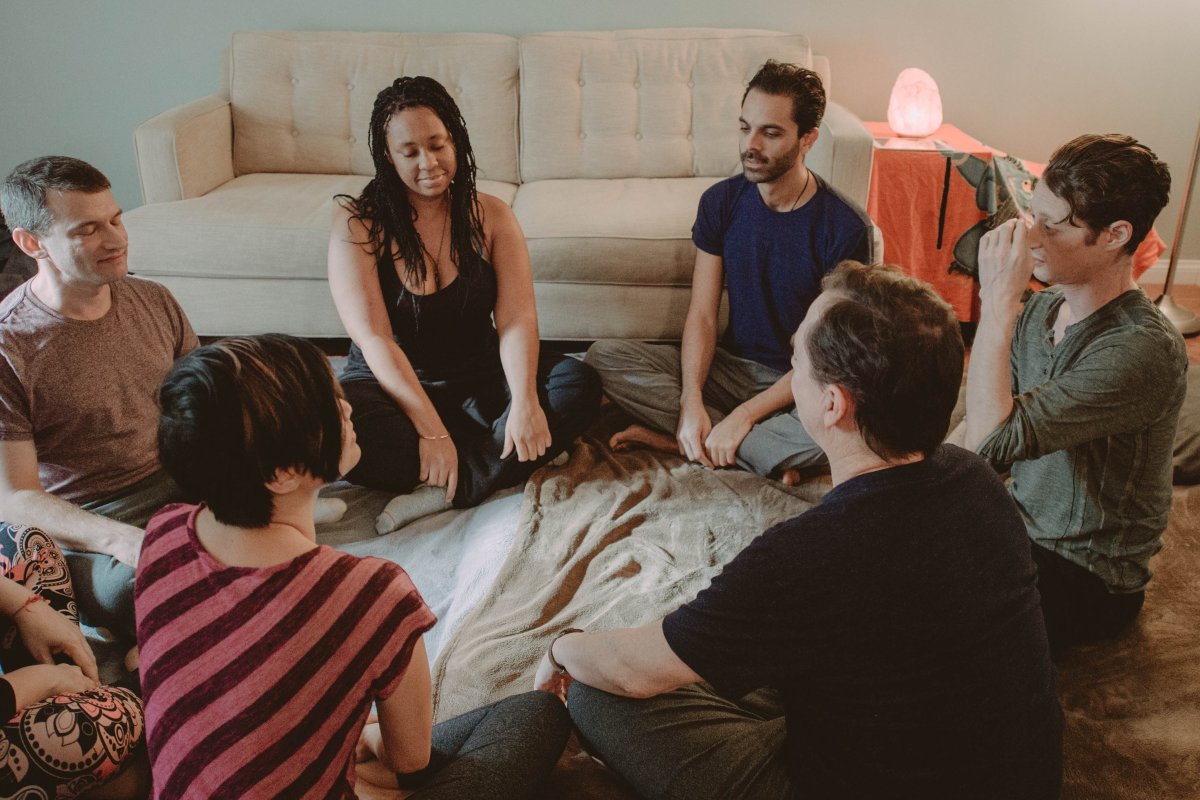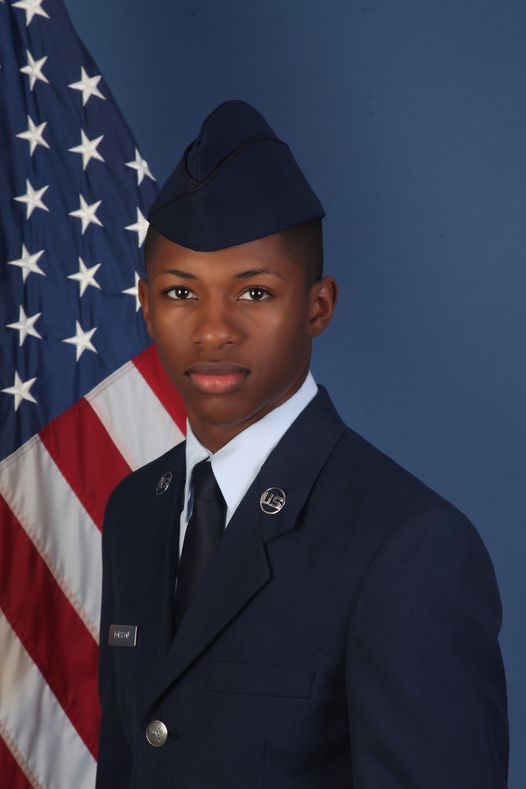In 2008 I was struggling with codependency, attention deficit hyperactivity disorder (ADHD), and emotional issues. I was married and I had two small children. At the time, I was reading a book on relationships and there was a chapter about healthy boundaries.
In this book, a cuddle party was mentioned, so I drove two hours to attend the closest one. I lived in Chicago at the time and the cuddle party was in Wisconsin.
As soon as I attended my first cuddle party, I was mind blown. I remember feeling so relaxed that it shocked me. It was very interesting because I wasn't touch-deprived; I had young children. But there was something about the nature of the workshop; it was filled with freedom.

After traveling to two cuddle parties, I asked a few facilitators to travel to me, and I began hosting monthly events in Chicago until I became certified to facilitate my own events.
After training with the founders of the nonprofit organization in 2010, I became a certified cuddle party facilitator. They then asked me to join the board a few years after that, and I began training facilitators myself.
What happens at cuddle parties
A cuddle party usually consists of consensual cuddling; it's a workshop that allows people to exercise their boundaries. It creates a space where we are allowed to relate to other people in a clear, consensual way using nurturing, affectionate touch. The workshop allows people to ask for things, to wait, and to listen.
A cuddle party at the organization I work with typically starts with the Welcome Circle. This is what we call the scripted part of the event which takes up the first hour or so.
During this, the participants will sit in a circle and the facilitator introduces themselves and states the rules of the cuddle party, and they then say a few words about the purpose behind it. Everyone else then introduces themselves and after they have done so, the facilitator will introduce some interactive exercises with the participants, but everything is an invitation. No one has to do anything. No touch is ever directed or expected.
We have a boundary asserting exercise whereby participants practice asking for something and hearing somebody say no to them, as well as being told no by others. The facilitator will ask the participant what kind of touch they like and dislike, what their boundaries are for the session, and what they'd like to get out of it.
We will then play a "yes-no" game, followed by an exercise whereby the participants have the option to hug others. Somebody will stand up and offer a person a hug, and the person can say yes or no, depending on how they feel. This is a warm-up to allow the participants to exercise their boundaries.
For the last hour or two of the session, participants are free to cuddle one another, or to sit in the space, depending on their boundaries. Towards the end of the session, there is a closing circle where people have a chance to speak about how they feel, and what came up for them during the event.
It's usually very fun and inspiring for me to witness because, at the end of every workshop, I find that people open up more, and they are more vulnerable or enlightened by their own boundaries.
At these workshops, we have comfy furniture and snacks available. People sometimes bring stuffed animals and at the end of the welcome circle, the atmosphere is always peaceful.

Cuddle parties have changed people's lives
One of the things that are unique about our cuddle parties is that people are encouraged to say no. That's radical, because saying "no" seems to be so simple, yet it makes a big difference.
Often, as humans, we are afraid to say "no" because we fear the impact, and what others may think of us. We're social animals and we need to feel safe, so it's understandable. In addition to saying "no," hearing the word "no" can be just as hard for the person on the receiving end.
I believe that we live in a society whereby we must follow many rules and saying "no" may sometimes be frowned upon. So, it's very calming for people just to be in a space where they don't have to do anything.
For me, the practice of saying "no" has allowed me to realize that we're limited as humans. It's humbling because it reminds us that we can't do it all and we can't be everything, and that's okay.
For example, some time ago, I told one of my friends that I would commit to writing a foreword for his book, which is wonderful. But with every time I agree to something, there are many times I can't because I have made a choice, I have committed to something, which therefore means that I am limited in committing to other things.
As humans, we can't give an honest answer if we're not relaxed. If our nervous system is dysregulated and if we're in a fight-flight or freeze response, we will find it more difficult to make decisions. Cuddling activates our parasympathetic nervous system, allowing us to generally be more peaceful.
It's much easier to hear something like, "I'm so grateful that you asked me, and I really appreciate hearing what you want, and I want to give you that, but the honest answer is no," when you feel peaceful.

People's lives are being changed
A chemical called oxytocin, which is known as the bonding hormone, is usually released after safe physical touch takes place. It always reminds me of the first cuddle party event that I ever attended.
People also often cry during the closing circles. I remember in one instance, one woman cried and it was very poignant to me because she'd taken part in many sexual events and she was extremely confident. It shocked me to see that she was skeptical about the cuddle party, but then I realized that it's because cuddling takes emotional vulnerability. Sometimes, people who are not intimidated by sexuality find cuddling very vulnerable and intimate because they are prompted to get emotionally naked.
After this woman cried, she said that she didn't think it was possible to be in a setting where she could say "no" to something as simple as a hug or holding somebody's hand, and have somebody really appreciate that, acknowledge it and wholeheartedly accept it. I come across inspirational stories like this all the time.
I am not a licensed therapist, but I train facilitators to hold space. This involves encouraging them to listen to people, to empathize with them, and to help them understand the simple structure of the cuddle party. I train them to be present with the people in a cuddle party by being emotionally available; that is very important. It is often difficult to remain present with somebody when they are distressed, but I am training facilitators to be with their participants in that way, knowing that repressed feelings may surface. We call this constructive discomfort.
One of the biggest misconceptions about cuddle parties is that everybody cuddles during our sessions, which is understandable, but false. No one is obliged to do anything, which is very important. We encourage people to say "no," to relax, and to breathe.
Madelon Guinazzo is a cuddle party facilitator at Cuddle Party Inc. You can find out more about this nonprofit organization here. She is also the co-founder of Cuddlist, a nonprofit organization.
All views expressed in this article are the author's own.
As told to Newsweek associate editor, Carine Harb.
Do you have a unique experience or personal story to share? Email the My Turn team at myturn@newsweek.com
Uncommon Knowledge
Newsweek is committed to challenging conventional wisdom and finding connections in the search for common ground.
Newsweek is committed to challenging conventional wisdom and finding connections in the search for common ground.
About the writer
To read how Newsweek uses AI as a newsroom tool, Click here.






